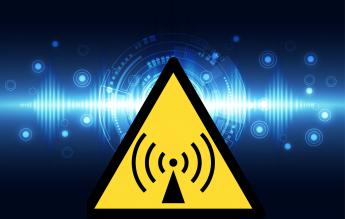
Section 38.3 of this document describes the different tests to be performed on lithium ion cells and batteries and gives its name to the UN 38.3 regulation
The provision of a UN 38.3 or UN Transportation Testing (UN/DOT 38.3) report is very often a prerequisite for a transport
The reference document defines the different types of tests T.1 to T.8 and the conditions under which they must be carried out (number of samples, load conditions, operating procedures, test criteria ...)
The Emitech Group carries out all these tests. The diversity of our equipment allows us to use the test equipment with the most suitable specifications for the characteristics of the cells and batteries entrusted to us.
We thus offer you costs corresponding to the means engaged and in the respect of your constraints of deadlines.
Test cells and batteries shall be stored at a pressure of 11.6 kPa or less for at least six hours at ambient temperature (20 +/-5°C).
This test simulates air transport under low-pressure conditions.
Cells and batteries meet this requirement if there is no leakage, no venting, no disassembly, no rupture and no fire and if the open circuit voltage of each test cell or battery after testing is not less than 90 % of its voltage immediately prior to this procedure. The requirement relating to voltage is not applicable to test cells and batteries at fully discharged states.
Test cells and batteries are to be stored for at least six hours at a test temperature equal to 72 +/- 2 °C, followed by storage for at least six hours at a test temperature equal to - 40 +/- 2 °C. The maximum time interval between test temperature extremes is 30 minutes. This procedure is to be repeated until 10 total cycles are complete, after which all test cells and batteries are to be stored for 24 hours at ambient temperature (20 +/-5 °C). For large cells and batteries the duration of exposure to the test temperature extremes should be at least 12 hours.
More information about our thermal testing facilities
This test assesses cell and battery seal integrity and internal electrical connections. The test is conducted using rapid and extreme temperature changes.
Cells and batteries meet this requirement if there is no leakage, no venting, no disassembly, no rupture and no fire and if the open circuit voltage of each test cell or battery after testing is not less than 90 % of its voltage immediately prior to this procedure. The requirement relating to voltage is not applicable to test cells and batteries at fully discharged states.
Cells and batteries are firmly secured to the platform of the vibration machine without distorting the cells in such a manner as to faithfully transmit the vibration.
The vibration shall be a sinusoidal waveform with a logarithmic sweep between 7 Hz and 200 Hz and back to 7 Hz traversed in 15 minutes. This cycle shall be repeated 12 times for a total of 3 hours for each of three mutually perpendicular mounting positions of the cell.
One of the directions of vibration must be perpendicular to the terminal face.
The logarithmic frequency sweep shall differ for cells and batteries with a gross mass of not more than 12 kg (cells and small batteries), and for batteries with a gross mass of more than 12 kg (large batteries).
More information about our vibration testing facilities
In addition, our design offices can take care of the design of the the mounting parts. This step is essential for the good realization of the tests.
This test simulates vibration during transport.
Cells and batteries meet this requirement if there is no leakage, no venting, no disassembly, no rupture and no fire during the test and after the test and if the open circuit voltage of each test cell or battery directly after testing in its third perpendicular mounting position is not less than 90 % of its voltage immediately prior to this procedure. The requirement relating to voltage is not applicable to test cells and batteries at fully discharged states.
Test cells and batteries shall be secured to the testing machine by means of a rigid mount which will support all mounting surfaces of each test battery. The formulas defined below are used to calculate the appropriate minimum peak acceleration.
IEC Standard 60068-2-27 (Fourth Edition 2008-02): Environmental testing-Part 2-27: Tests – Test Ea and guidance: Shock provides guidance on tolerance for acceleration and pulse duration.
More information about our shock testing facilities
In addition, our design offices can take care of the design of the the mounting parts. This step is essential for the good realization of the tests.
This test assesses the robustness of cells and batteries against cumulative shocks.
Cells and batteries meet this requirement if there is no leakage, no venting, no disassembly, no rupture and no fire and if the open circuit voltage of each test cell or battery after testing is not less than 90 % of its voltage immediately prior to this procedure. The requirement relating to voltage is not applicable to test cells and batteries at fully discharged states.
The cell or battery to be tested shall be heated for a period of time necessary to reach a homogeneous stabilized temperature of 57 Å} 4 ÅãC, measured on the external case. This period of time depends on the size and design of the cell or battery and should be assessed and documented. If this assessment is not feasible, the exposure time shall be at least 6 hours for small cells and small batteries, and 12 hours for large cells and large batteries. Then the cell or battery at 57 +/- 4 °C shall be subjected to one short circuit condition with a total external resistance of less than 0.1 ohm.
This short circuit condition is continued for at least one hour after the cell or battery external case temperature has returned to 57 +/- 4 °C, or in the case of the large batteries, has decreased by half of the maximum temperature increase observed during the test and remains below that value.
The short circuit and cooling down phases shall be conducted at least at ambient temperature.
This test simulates an external short circuit.
Cells and batteries meet this requirement if their external temperature does not exceed 170 °C and there is no disassembly, no rupture and no fire during the test and within six hours after the test.
Impact (applicable to cylindrical cells not less than 18.0 mm in diameter)
The test sample cell or component cell is to be placed on a flat smooth surface.
A 15.8 mm +/- 0.1 mm diameter, at least 6 cm long, or the longest dimension of the cell, whichever is greater, Type 316 stainless steel bar is to be placed across the centre of the sample. A 9.1 kg +/- 0.1kg mass is to be dropped from a height of 61 +/- 2.5 cm at the intersection of the bar and sample in a controlled manner using a near frictionless, vertical sliding track or channel with minimal drag on the falling mass. The vertical track or channel used to guide the falling mass shall be oriented 90 degrees from the horizontal supporting surface.
The test sample is to be impacted with its longitudinal axis parallel to the flat surface and perpendicular to the longitudinal axis of the 15.8 mm +/- 0.1 mm diameter curved surface lying across the centre of the test sample. Each sample is to be subjected to only a single impact.
Crush (applicable to prismatic, pouch, coin/button cells and cylindrical cells less than 18.0 mm in diameter)
A cell or component cell is to be crushed between two flat surfaces. The crushing is to be gradual with a speed of approximately 1.5 cm/s at the first point of contact. The crushing is to be continued until the first of the three options below is reached:
a - The applied force reaches 13 kN +/- 0.78 kN; (Example: The force shall be applied by a hydraulic ram with a 32 mm diameter piston until a pressure of 17 MPa is reached on the hydraulic ram.)
b - The voltage of the cell drops by at least 100 mV; or
c - The cell is deformed by 50 % or more of its original thickness. Once the maximum pressure has been obtained, the voltage drops by 100 mV or more, or the cell is deformed by at least 50 % of its original thickness, the pressure shall be released.
A prismatic or pouch cell shall be crushed by applying the force to the widest side. A button/coin cell shall be crushed by applying the force on its flat surfaces.
For cylindrical cells, the crush force shall be applied perpendicular to the longitudinal axis.
Each test cell or component cell is to be subjected to one crush only. The test sample shall be observed for a further 6 h. The test shall be conducted using test cells or component cells that have not previously been subjected to other tests.
These tests simulate mechanical abuse from an impact or crush that may result in an internal short circuit.
Cells and component cells meet this requirement if their external temperature does not exceed 170 °C and there is no disassembly and no fire during the test and within six hours after this test.
The charge current shall be twice the manufacturer's recommended maximum continuous charge current. The minimum voltage of the test shall be as follows:
a - when the manufacturer's recommended charge voltage is not more than 18 V, the minimum voltage of the test shall be the lesser of two times the maximum charge voltage of the battery or 22 V.
b - when the manufacturer's recommended charge voltage is more than 18 V, the minimum voltage of the test shall be 1.2 times the maximum charge voltage.
Tests are to be conducted at ambient temperature. The duration of the test shall be 24 hours.
This test evaluates the ability of a rechargeable battery or a single cell rechargeable battery to withstand an overcharge condition.
Rechargeable batteries meet this requirement if there is no disassembly and no fire during the test and within seven days after the test.
Each cell shall be forced discharged at ambient temperature by connecting it in series with a 12V D.C. power supply at an initial current equal to the maximum discharge current specified by the manufacturer.
The specified discharge current is to be obtained by connecting a resistive load of the appropriate size and rating in series with the test cell. Each cell shall be forced discharged for a time interval (in hours) equal to its rated capacity divided by the initial test current (in ampere).
This test evaluates the ability of a primary or a rechargeable cell to withstand a forced discharge condition.
Primary or rechargeable cells meet this requirement if there is no disassembly and no fire during the test and within seven days after the test.
According to the requirements of Section 38.3, cells and batteries are subject to specific tests according to their type, as follows:
In addition to the required tests, Section 38.3 also subjects cells and batteries to specific test sequencing requirements and defines limitations on their use in testing. Tests 1 through 5 must be performed in sequence on the same battery sample. The overload test may be performed using undamaged battery samples from previous tests. However, the impact test and the forced discharge test must be performed on battery samples that have not been previously used for other tests.
The United Nations Economic Commission for Europe (UNECE ) is one of the five regional commissions of the United Nations Economic and Social Council (ECOSOC). It is composed of 56 member states: European countries, plus the United States, Canada, Israel, Turkey, and the former Soviet republics of the Caucasus and Central Asia.
The objective of this commission is to converge the approval procedures between the member states.
Lithium batteries, both lithium metal (UN3090 and UN3091 - hazard category 9) and lithium ion (UN3480 and UN30481 - hazard category 9), have been designated by the United Nations as "hazardous materials" with regard to transport regulations. This means that the transport of this type of batteries, either alone or integrated in a device, is regulated by national and international agreements to ensure that the product is transported safely.
If the regulation to be applied for lithium batteries depends on the mode of transport used (Road transport - The regulation mainly concerned is the ADR - See ECE/TRANS/275, Vol. I and II, Air transport - The DGR of the International Civil Aviation Organization (ICAO) applies - see also the LBSR file of IATA and Maritime transport - The IMDG code published by the IMO applies,) all these regulations require that these types of batteries meet the requirements of a series of safety controls defined by the United Nations in the United Nations Recommendations on the Transport of Dangerous Goods, Manual of Tests and Criteria ST/SG/AC. 10 /11.
























Emitech Group - Legal information